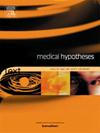Sinoatrial node rod cells transplantation into the injured spinal cord as a novel therapeutic approach to improve proper information transmission
IF 2.1
4区 医学
Q3 MEDICINE, RESEARCH & EXPERIMENTAL
引用次数: 0
Abstract
Spinal cord injury (SCI) is a devastating condition that disrupts neural circuits, leading to severe motor, sensory, and autonomic dysfunction. Despite extensive research, no effective treatment has been established to restore proper information transmission across the injury site. Current therapeutic strategies, including cell therapy and electrical stimulation, have shown promise but remain limited in their ability to fully re-establish functional connectivity. This study proposes a novel therapeutic approach for SCI by implanting sinoatrial node (SAN) rod cells into the injured spinal cord to facilitate electrical signal transmission and restore neural communication. Given their intrinsic ability to conduct electrical impulses in the heart, we hypothesize that SAN rod cells can serve as bioelectrical bridges, reconnecting the severed. We discuss the pathophysiology of SCI, barriers to axonal regeneration, and existing treatment modalities, highlighting the limitations of current interventions. We propose a transplantation strategy involving SAN rod cells and evaluate their potential for integration into the spinal cord. The hypothesis is supported by the role of gap junctions, particularly connexins, in neuronal electrical coupling, which may enable functional interaction between rod cells and spinal neurons. Furthermore, we outline experimental approaches, including in vivo spinal cord transection models and potential methods for generating SAN rod cells from induced pluripotent stem cells. Rod cells, known for their ability to conduct electrical signals without generating action potentials, could theoretically facilitate neural communication across SCI lesions. Their integration into spinal networks via gap junctions may re-establish lost connectivity, potentially improving motor and sensory function.
求助全文
约1分钟内获得全文
求助全文
来源期刊

Medical hypotheses
医学-医学:研究与实验
CiteScore
10.60
自引率
2.10%
发文量
167
审稿时长
60 days
期刊介绍:
Medical Hypotheses is a forum for ideas in medicine and related biomedical sciences. It will publish interesting and important theoretical papers that foster the diversity and debate upon which the scientific process thrives. The Aims and Scope of Medical Hypotheses are no different now from what was proposed by the founder of the journal, the late Dr David Horrobin. In his introduction to the first issue of the Journal, he asks ''what sorts of papers will be published in Medical Hypotheses? and goes on to answer ''Medical Hypotheses will publish papers which describe theories, ideas which have a great deal of observational support and some hypotheses where experimental support is yet fragmentary''. (Horrobin DF, 1975 Ideas in Biomedical Science: Reasons for the foundation of Medical Hypotheses. Medical Hypotheses Volume 1, Issue 1, January-February 1975, Pages 1-2.). Medical Hypotheses was therefore launched, and still exists today, to give novel, radical new ideas and speculations in medicine open-minded consideration, opening the field to radical hypotheses which would be rejected by most conventional journals. Papers in Medical Hypotheses take a standard scientific form in terms of style, structure and referencing. The journal therefore constitutes a bridge between cutting-edge theory and the mainstream of medical and scientific communication, which ideas must eventually enter if they are to be critiqued and tested against observations.
 求助内容:
求助内容: 应助结果提醒方式:
应助结果提醒方式:


